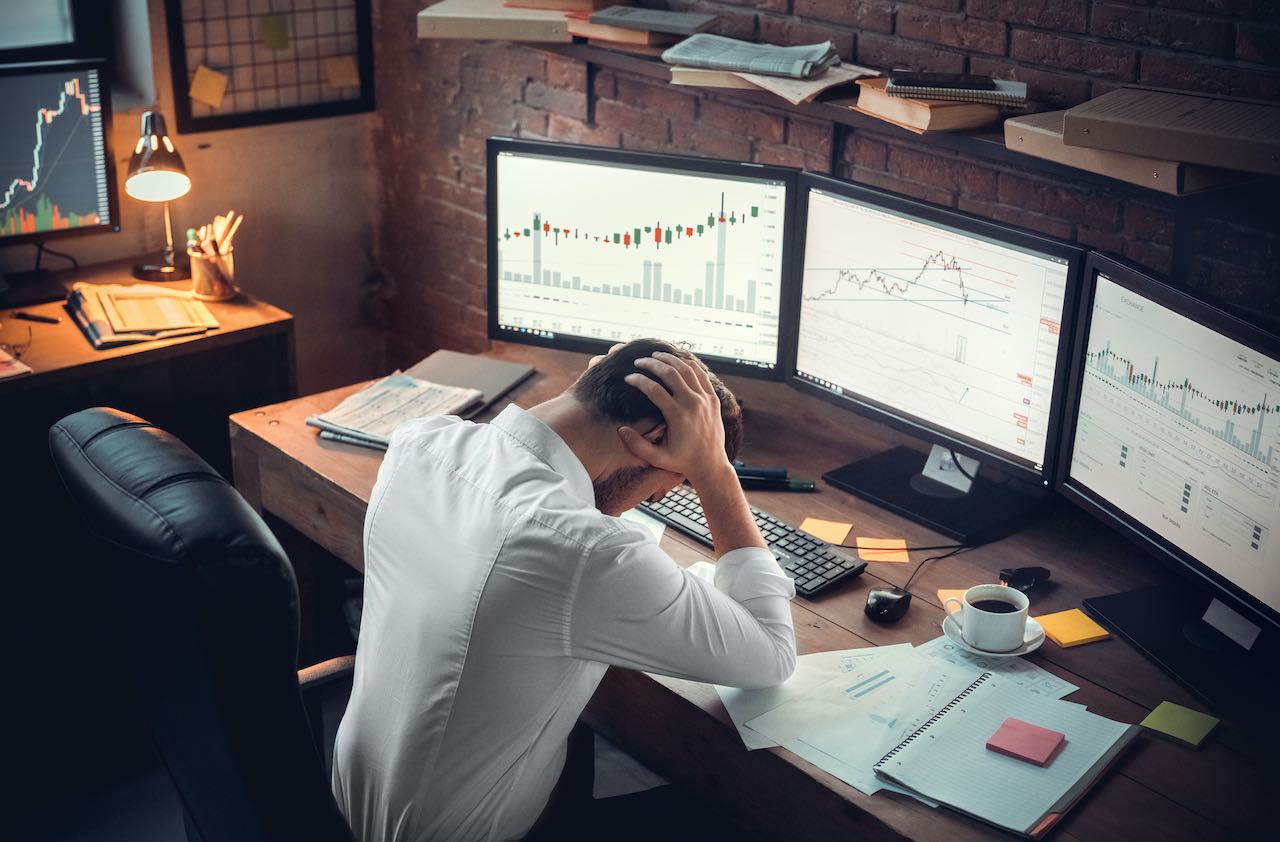Time to Sell Your Pimco Funds?
Mohamed El-Erian’s departure leaves Bill Gross alone at the top of the mutual fund giant. You may do better with bond funds elsewhere.

Pimco, the giant bond fund manager, made big news the other day when it announced that Mohamed El-Erian, its telegenic CEO and co-chief investment officer, would leave the firm in March. The move—and other signs of turmoil at the Newport Beach, Cal., firm—raises the question of whether investors should leave Pimco, too.
I don’t think Pimco’s funds will become awful. But, given all the management uncertainty, I think you can find better bond funds, such as Loomis Sayles Bond (LSBRX) and Metropolitan West Unconstrained Bond (MWCRX). Both are among my best bond fund picks for 2014.
With El-Erian’s departure, it’s not clear that Pimco’s all-important investment committee will have anyone with the stature and gumption to challenge the views of Bill Gross, the firm’s other investment chief and public face. That’s especially important at Pimco because once the investment committee sets its position on the financial markets, fund managers are generally expected to fall in line.
From just $107.88 $24.99 for Kiplinger Personal Finance
Become a smarter, better informed investor. Subscribe from just $107.88 $24.99, plus get up to 4 Special Issues

Sign up for Kiplinger’s Free Newsletters
Profit and prosper with the best of expert advice on investing, taxes, retirement, personal finance and more - straight to your e-mail.
Profit and prosper with the best of expert advice - straight to your e-mail.
Gross, who frequently crossed swords with El-Erian on investing policy, has often said that he needs good people to present conflicting views. With El-Erian’s departure, Gross may not have anyone in that role. Chris Dialynas, who managed Pimco Unconstrained Bond D (symbol PUBDX) until December and is taking a sabbatical starting in March, has often mixed it up with Gross on many issues. So did economist Paul McCulley, an expert on monetary policy, who left Pimco in 2010.
The instability at Pimco is important for several reasons. First, the firm is huge, with assets under management totaling some $2 trillion. Second, the bond market is clearly at an inflection point. Pimco benefited immensely from a 30-year bull market in bonds. From September 1981 through July 2012, the yield on the benchmark ten-year Treasury bond plunged from 15.8% to 1.4%. Because bond prices move inversely with yields, investors in most bond funds racked up inordinately big gains. But yields have reversed course, and most experts, myself included, believe the long-term direction of interest rates is higher. That means the days of big gains are over—indeed, there will be years when many, if not most, bond funds lose money.
Finally, unlike stock funds, where the most successful managers focus on companies rather than calling market turns, getting the big picture right is critical for bond funds. That’s especially so when the funds give their managers a fair amount of flexibility, as is the case with Pimco Total Return (PTTDX), a behemoth with $237 billion and the firm’s flagship. (Note that Harbor Bond (HABDX), a near clone of Pimco Total Return, is a member of the Kiplinger 25.)
In most years, Pimco’s investing committee is right more often than wrong. But in 2011 it made some bad calls that led to poor results. And last year, the committee was dead wrong in its bullish predictions for emerging-markets bonds and Treasury inflation-protected securities, and most of its funds produced subpar returns. For instance, Total Return lost 2.2%. Investors noticed, and they pulled a stunning $42 billion out of the fund last year.
Might Pimco now begin to recede, just as Fidelity, Janus and several other smaller firms did during and after a long-running bull market in stocks ended in 2000? Fund companies tend to be surprisingly fragile enterprises. Once they lose their mojo, they often find it difficult to bounce back.
Working against Pimco is the company’s sheer size. That minimizes the ability of its funds to earn profits by picking undervalued bonds, and increases even further the importance of getting the big picture right. Total Return, for instance, is bigger than some of the sectors in which it invests. Its girth is why I’ve suggested investors sell the fund (link here).
Gross founded Pimco in 1971. At 69, he appears to be in fine health and says he plans to work five to ten more years. But the departure of El-Erian, 55, leaves no clear successor. Gross says he has several potential candidates in mind, and Pimco promoted several people as it announced El-Erian’s resignation.
El-Erian will remain a member of the international executive committee of Pimco’s parent, German financial-services company Allianz. He’ll also advise Allianz’s management board on global economic and policy issues. Although Allianz owns Pimco, Pimco has been largely independent.
It’s not clear why El-Erian is leaving. But El-Erian would hardly be the first Pimco manager to leave because of Gross’s demanding style. Says Eric Jacobson, Morningstar’s senior bond fund analyst: “A key issue for some people seems be the level of intensity, both in terms of his scrutiny when it comes to all facets of the work itself, as well as the time commitment,” which includes regularly getting in as early as 4 a.m. and working weekends.
Lest we forget, El-Erian hasn’t exactly set the world on fire running Pimco Global Multi-Asset D (PGMDX) since its 2008 launch. I’m sure the fund’s wretched performance didn’t help his position at Pimco. But Gross says El-Erian wasn’t encouraged to leave.
One other big problem with Pimco is that its funds charge too much. If you have the big bucks to buy the institutional class shares or are lucky enough to have them in your 401(k) plan, you can get access to Pimco’s services at more reasonable prices. But the Pimco Class D shares, which are available through many discount brokers without a sales fee, are awfully expensive, especially when you consider how low yields are. For instance, Pimco Income (PONDX), my favorite Pimco fund, has $30 billion in assets yet charges 0.74% annually. In the bond bull market, the high fees didn’t matter all that much. Now they will, El-Erian or no El-Erian.
Steven T. Goldberg is an investment adviser in the Washington, D.C., area.
Profit and prosper with the best of Kiplinger's advice on investing, taxes, retirement, personal finance and much more. Delivered daily. Enter your email in the box and click Sign Me Up.

-
 The Stoic Retirement: Ancient Wisdom for Today's Reality
The Stoic Retirement: Ancient Wisdom for Today's RealityA "Stoic retirement" doesn't mean depriving yourself. It's a character-based approach to life and aging that can bring calm and clarity.
-
 My Teen Crashed His Car and Now Our Insurance Has Tripled. What Now?
My Teen Crashed His Car and Now Our Insurance Has Tripled. What Now?Dealing with the costly aftermath of a teen car accident is stressful. Here are your options for navigating it.
-
 11 Outrageous Ways To Spend Money in Retirement
11 Outrageous Ways To Spend Money in RetirementWhether you have excess cash to spend or want to pretend, here’s a look at 11 ridiculous ways retirees can splurge.
-
 ESG Gives Russia the Cold Shoulder, Too
ESG Gives Russia the Cold Shoulder, TooESG MSCI jumped on the Russia dogpile this week, reducing the country's ESG government rating to the lowest possible level.
-
 Morningstar Fund Ratings Adopt a Stricter Curve
Morningstar Fund Ratings Adopt a Stricter Curveinvesting Morningstar is in the middle of revamping its fund analysts' methodology. Can they beat the indices?
-
 Market Timing: The Importance of Doing Nothing
Market Timing: The Importance of Doing NothingInvestor Psychology Investors, as a whole, actually earn less than the funds that they invest in. Here’s how to avoid that fate.
-
 Commission-Free Trades: A Bad Deal for Investors
Commission-Free Trades: A Bad Deal for Investorsinvesting Four of the biggest online brokers just cut their commissions to $0 per transaction. Be careful, or you could be a big loser.
-
 Vanguard Dividend Growth Reopens. Enter at Will.
Vanguard Dividend Growth Reopens. Enter at Will.investing Why you should consider investing in this terrific fund now.
-
 Health Care Stocks: Buy Them While They're Down
Health Care Stocks: Buy Them While They're Downinvesting Why this sector should outperform for years to come
-
 Buy Marijuana Stocks Now? You'd Have to Be Stoned.
Buy Marijuana Stocks Now? You'd Have to Be Stoned.stocks Don't let your investment dollars go to pot
-
 4 Valuable Lessons From the 10-Year Bull Market
4 Valuable Lessons From the 10-Year Bull MarketInvestor Psychology Anything can happen next, so you must be mentally prepared.